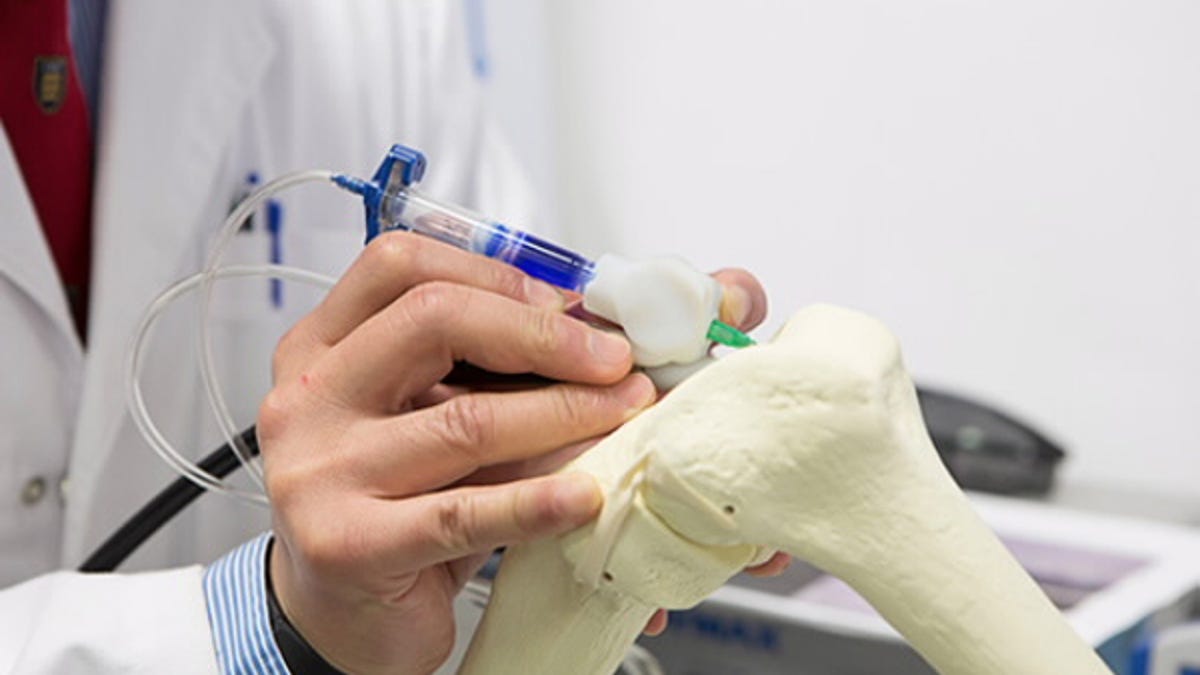3D printing 'bio pen' lets doctors draw implants on the fly
Researchers at the University of Wollongong have created a pen that uses 3D printing technology and bio ink to "draw" over sections of damaged bone.

(Credit: University of Wollongong)
Researchers at the University of Wollongong have created a pen that uses 3D printing technology and bio ink to "draw" over sections of damaged bone.
Doctors may soon be able to heal damaged bone just by drawing on it. Researchers at the Australian Research Council Centre of Excellence for Electromaterials Science (ACES) at the University of Wollongong, under the direction of professor Gordon Wallace, have created a pen that will allow surgeons to "draw" customised bone implants during surgery.
Called the BioPen, it uses a similar model to 3D printing, depositing cell material inside a biopolymer growth-factor gel, such as alginate (a seaweed extract), and a second protective outer gel layer. These two gels are combined in the nib as the material exits, allowing the surgeon to deliver live cells and growth factors to wounds. A low-powered ultraviolet light attached to the pen solidifies the material, providing protection for the cells.
Once the cells are delivered, they multiply, differentiate into nerve, muscle or bone cells and grow into functioning tissue. Using a pen as the delivery method reduces the amount of time the patient will need to spend in surgery and accelerates regeneration.
The ACES has recently grown functional knee cartilage from stem cells; it is hoped that the BioPen, designed and built using the University of Wollongong's 3D printers, will facilitate greater speed and precision during this process.
The BioPen is now in the hands of professor Peter Choong at St Vincent's Hospital in Melbourne, where the cell material will be optimised for clinical trials.
"The combination of materials science and next-generation fabrication technology is creating opportunities that can only be executed through effective collaborations such as this," professor Wallace said. "What's more, advances in 3D printing are enabling further hardware innovations in a rapid manner."
Via media.uow.edu.au

